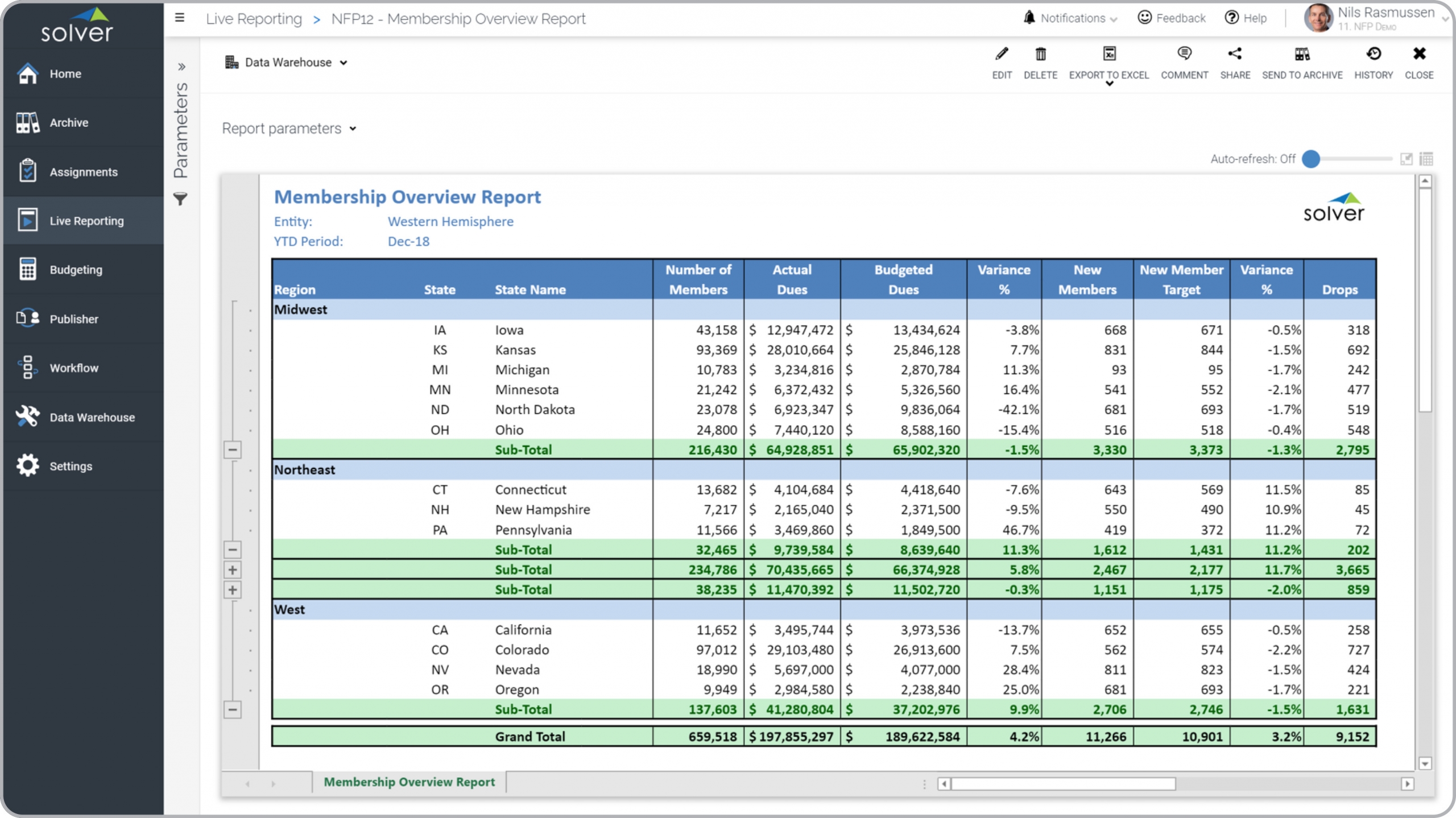Written by Nils R. | Dec 9, 2020 8:00:00 AM
What is
a
Membership Analysis Report
? Membership reports are considered analysis tools and are used by membership managers to monitor statistical and financial member metrics. Some of the key functionality in this type of report is that it can be run for any period and any organizational unit. The core of the report shows membership metrics by state and region with sub-totals and totals. The columns include Number of Members, Actual Dues, Budgeted Dues, Budget Variance, # of New Members, New Member Target, Variance and Drops. You find an example of this type of report below.
Purpose of
Membership Analysis Reports Nonprofits and associations use Membership Analysis Reports to monitor the organization's ability to meet its membership budgets and goals. When used as part of good business practices in a Financial Planning & Analysis (FP&A) and Membership department, an organization can improve its revenues and membership numbers as well as reduce the chances that attrition or other issues limits successful growth.
Membership Analysis Report
Example Here is an example of a Membership Report that compares financial and statistical metrics across geographic regions. [caption id="" align="alignnone" width="2560"]


- Native ERP report writers and query tools
- Spreadsheets (for example Microsoft Excel)
- Corporate Performance Management (CPM) tools (for example Solver)
- Dashboards (for example Microsoft Power BI and Tableau)
- View 100’s of reporting, consolidations, planning, budgeting, forecasting and dashboard examples here
- Read more about Nonprofit solutions here
- See how reports are designed in a modern report writer using a cloud-connected Excel add-in writer
- Discover how the Solver CPM solution delivers financial and operational reporting
- Discover how the Solver CPM solution delivers planning, budgeting and forecasting
- Watch demo videos of reporting, planning and dashboards
